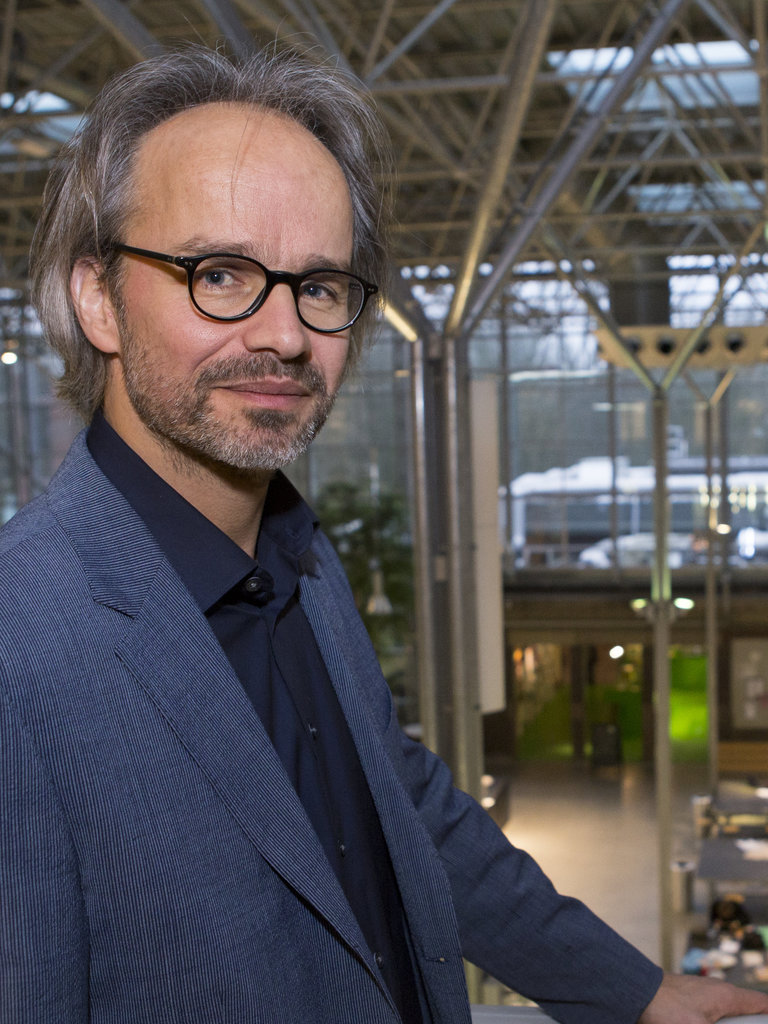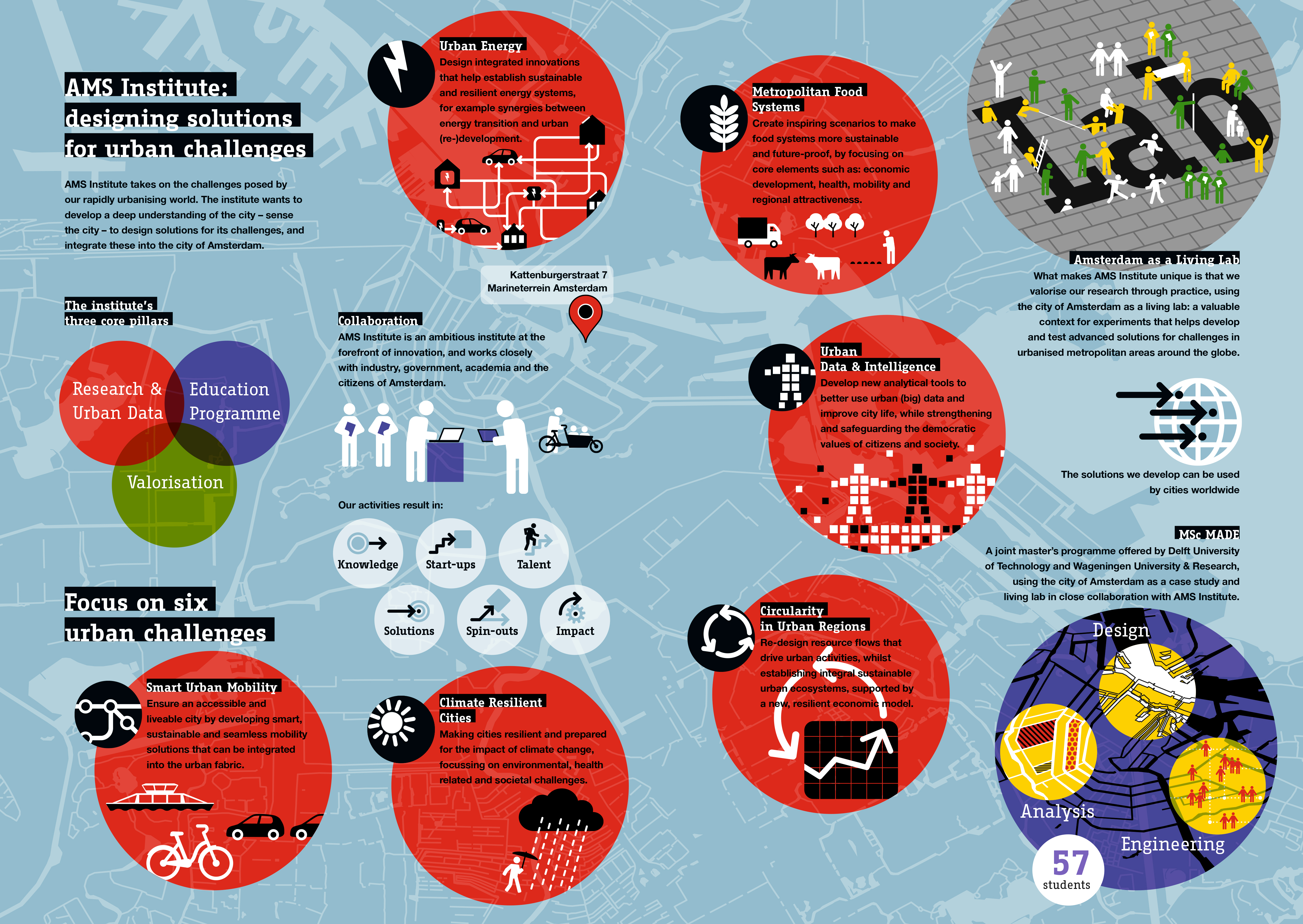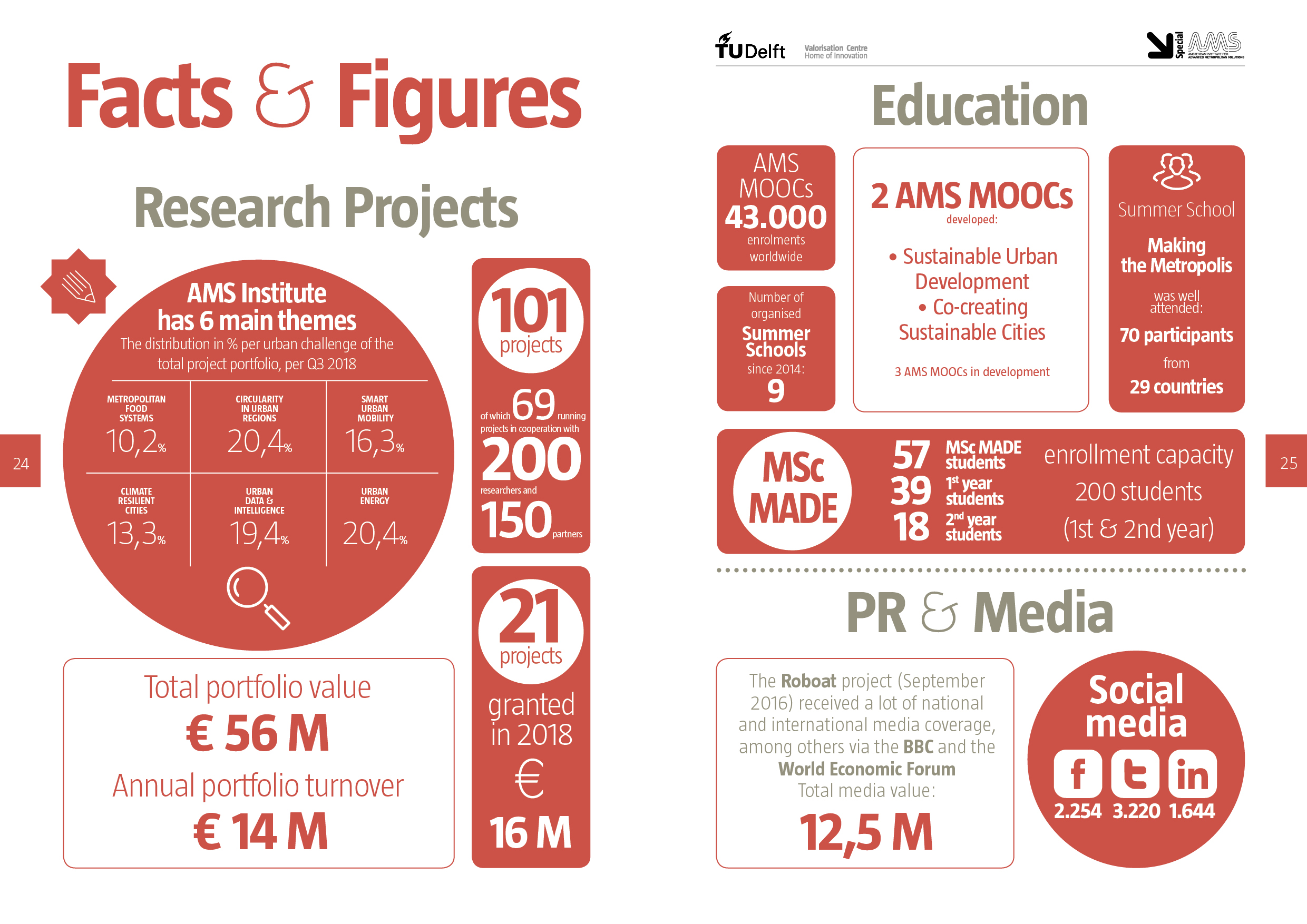
“The traditional models no longer work”
Scientific Director Arjan van Timmeren talks about the need for AMS Institute
By: Jurjen Slump
The increasing complexity of the world around us means that scientific research is also in a state of flux. It has now become necessary for researchers working on metropolitan problems - traffic, climate, energy, sustainability - to start testing their ideas at a much earlier stage than before at the place where the bottlenecks actually occur. In other words, in the big city. The AMS Institute proves that this is the right approach, says Scientific Director Arjan van Timmeren.
“The models used by scientists earlier to simulate reality no longer work at all times”, says Van Timmeren. Thanks to the internet, people have become less predictable than before, because they are exposed to many more influences and direct feedback. “Think of traffic jams, for example. Nowadays drivers will look up alternative routes on their phone. The models in general are not yet designed to cope with this.”
Double complexity
This is what Van Timmeren refers to as the ‘double complexity’: on the one hand, we have urban (technical) systems becoming increasingly complex and, on the other hand, there is real life in cities, with residents not always following the rules of logic. To ensure proper research despite this complexity, it has become necessary to take the laboratory to the city.
It is possible to approach the complexity of urban life in a ‘living lab’ if you involve the city residents and other relevant stakeholders such as the city council, water and energy providers, business community, etc. in the research. An additional advantage is that you can test potential applications much faster and refine them in real-life and real-time conditions. This means that you will have a completed product sooner, which can then be launched by either public authorities or for commercial purposes, by a company.
The relevance of the work we are doing turns out to be even greater than expected
International interest
Acceleration is the buzzword here. The AMS Institute’s approach accelerates innovation (see box on page 8). And this is absolutely essential. “The relevance of the work we are doing turns out to be even greater than expected”, says Van Timmeren. The institute can barely handle all the incoming requests for meetings, lectures and guided tours coming from both national and international delegations. “Cities are desperately looking for approaches and solutions to their problems.” Besides, other universities increasingly also want to know how the institute itself operates.
Originally set up around three general themes, AMS Institute’s activities are now focused on six, more specific topics (see infographic). “In recent years, we have identified the areas in which we have been able to develop excellence”, says the Scientific Director. “Those are the areas in which we can truly add value.” In addition, in
close consultation with the city council, we explore where the most important challenges for the city lie, and connect these to newly validated research projects.
Important role of SMEs
The AMS Institute works closely together with companies. Van Timmeren is surprised by the role played by SMEs, which is much more significant than expected. “They have to distinguish themselves primarily through innovation”, he explains. “That’s why they are more likely to take risks, while large companies focus more on consolidation.” The institute itself also generates entrepreneurial activities in the form
of start-ups. “The tools we have been working on in recent years are now mature enough to be put on the market.” The institute currently runs almost 100 projects, with different consortia, which already include a total of more than 150 companies.
Entrepreneurship also plays an important role in the institute’s educational offering. This consequently attracts enterprising students. “An above-average number of students registering for our MSc MADE already own a company, or set up their own businesses while studying”.
Innovative education
The educational programme is organised by Wageningen University & Research and Delft University of Technology. This collaboration has also resulted in highly innovative education, says Van Timmeren, himself a professor in Delft. “It is interesting to experience how multiple universities, with different educational cultures, enrich one another.”
Delft University of Technology also benefits from the positive effects of these collaborations, because it connects colleagues from different faculties more easily. “Urban development used to be a rather conservative discipline, but with the emergence of new technologies, the pace of innovation is also picking up here. As a result, within Delft University of Technology, we now have collaborations between my own faculty (Architecture and the Built Environment) and various others: Computer Science, Civil Engineering, Mechanical Engineering, Industrial Design Engineering, Technology, Policy and Management and the Applied Science faculty.
“It adds so much value! Together you will be able to address an unprecedented level of complexity. And the solutions are all the more effective because everyone keeps doing what they’re good at. Here, one and one really add up to three.”
Fundamental research
Although the working method followed by the AMS Institute is very much in line with applied research, it also offers added value for fundamental research. Through more targeted innovations, you will increase the chances of success and, therefore, of follow-up research. This means that you can set up long-term research projects based on the same themes, making them relevant for fundamental research, which often also has a longer time span. This
way of working has also been recognized by the NWO, the Netherlands Organisation for Scientific Research and European research councils.
Breeding ground
Innovative education, enterprising students, the development of a campus in the heart of the city: Van Timmeren calls it a breeding ground. “As it will be developed the coming years as an innovation district, where ‘urban professionals’ will be able to attend courses. These professionals often find it difficult to keep up with the rapid pace of developments in the areas of IT and big data”, says the professor. “This refers to professionals in both public and private sectors.” The Marineterrein area, where the institute has relocated, used to be government property for many years. It has a rich history. The beauty of it, says Van Timmeren, is that the area is now being returned to the city. “Until recently, this area was blurred out on Google Maps. Now it will become a test area, an innovation campus where we will develop applications that will ultimately benefit the whole of Amsterdam as well as the rest of the Netherlands.”
AMS Institute Living Labs
Hop, step and jump
Living labs key to AMS Institute’s working method
Living labs form a crucial link in how the AMS Institute ensures that innovative research benefits society earlier. The institute refers to this innovative research method as the ‘hop, step and jump’ approach:
Hop
“Together with our most important stakeholders and partners, we draw up a problem analysis of a specific challenge the metropolitan area is facing. At this stage, the scientific research takes place in the laboratories of Wageningen University & Research, MIT and Delft University of Technology.”
Step
“This is followed by the innovative part of the research process: the results of the first part of the research are tested and validated in a real, ‘living’ environment within the Amsterdam metropolitan area. All parties concerned, including residents, are also involved at this stage. This unique intermediate step forms the basis of the AMS Institute: ensuring that our solutions are aligned more closely with real life in urban environments.”
Jump
“This enables us to take a bigger leap forward: faster implementation of our solutions in society, as a result of which they will have a bigger impact. This creates sustainable and resilient cities that know how to deal with major societal challenges.


